Dien Bien is a mountainous province in Northwest Vietnam, located between 20°54 '- 22°33' north latitude and 102°10 '- 103°56' east longitude. The province is adjacent to Lai Chau in the north, Son La in the east - northeast, Yunnan of China in the northwest with 38.5km long border line, Luang Prabang in the west - southwest with 360km long border line.
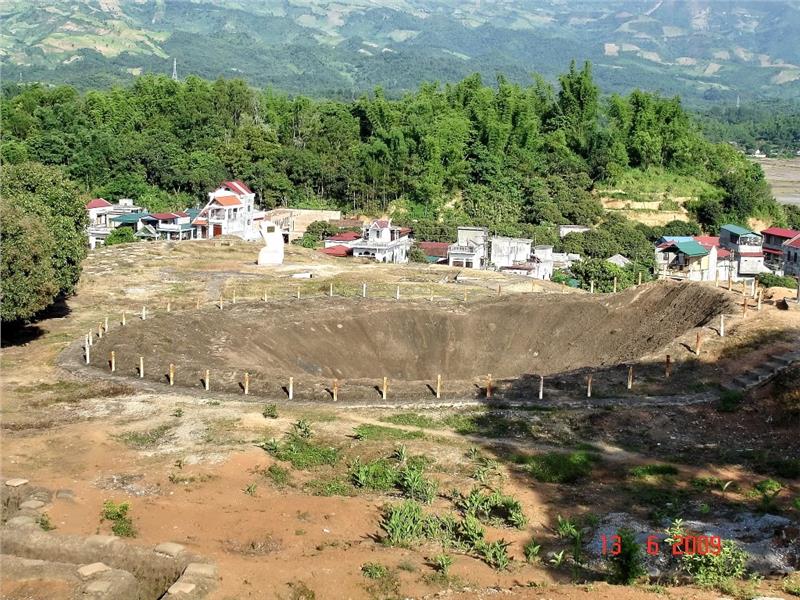
Dien Bien is a northwestern mountainous province, located about 500km from Hanoi to the west. The natural area of the province is 9554.097 square kilometers with 438.135 people. Dien Bien terrain is complex composed of mountains stretching along the Vietnam - Lao border with 100km long. Interspersed with high mountains are valleys, small, steep rivers and streams allocated across the province. In particular, Muong Thanh valley with flat surface formed a vast paddy field.
Dien Bien has the tropical monsoon climate with cold and dry winters and hot and wet summers. The annual average temperature ranges from 21 to 23°C; the average rainfall is from 1700-2500mm; the average humidity is 83 - 85%. Due to the extensive natural area, dissected terrain, Dien Bien climate is divided into 3 distinct subregions including subregional climates of Muong Nhe, Muong Lay and plateau climate Son La and Ma River upstream.

Dien Bien is the ancient land. The province has various ancient monuments including Tham Khuong cave and Than Bua cave in Tuan Giao. In the 9th - 10th centuries, Lu people in Muong Thanh were the most developed in the area and controlled Sin Ho, Muong Lay, Tuan Giao. Under the French occupation of Vietnam, Hung Hoa was divided into provinces of Hoa Binh, Son La, Lai Chau, Lao Cai, Yen Bai and some districts were merged into Phu Tho.
The name "Dien Bien" was called in 1841 by Thieu Tri, Dien means solid, Bien means border, frontier. Dien Bien Phu under the reign of King Thieu Tri consisted of 3 districts Ninh Bien, Tuan Giao and Lai Chau. The name Dien Bien Phu today appeared since then. In 1890, the French colonists began impose their rule in Lai Chau (including Dien Bien and Lai Chau today).
On June 28th, 1909, Governor-General of French Indochina issued the Decree of establishment of Lai Chau province, Dien Bien province and Lai Chau province today. May 7, 1954, Dien Bien province made historic victory of Dien Bien Phu ending 80 years of slavery under the yoke of colonial feudalism. On September 27th, 1962, the 5th session of National Assembly II decided to establish 2 provinces of Son La, Nghia Lo and Lai Chau. At that time, Lai Chau province consisted of 7 districts: Dien Bien, Tuan Giao, Tua Chua, Muong Te, Muong Lay, Sin Ho, Phong Tho and Lai Chau town. The autonomous region had the area of 67.300km² with 438.000 people.
According to Decision No. 130 / HDBT of the Council of Ministers, April 18, 1992 Dien Bien Phu town was established and became the provincial capital of the province. In November 2003, the National Assembly decided to separate Lai Chau province into Lai Chau province and Dien Bien province. Dien Bien province has the natural area of 95.409,70 ha and population of 40.300 people.
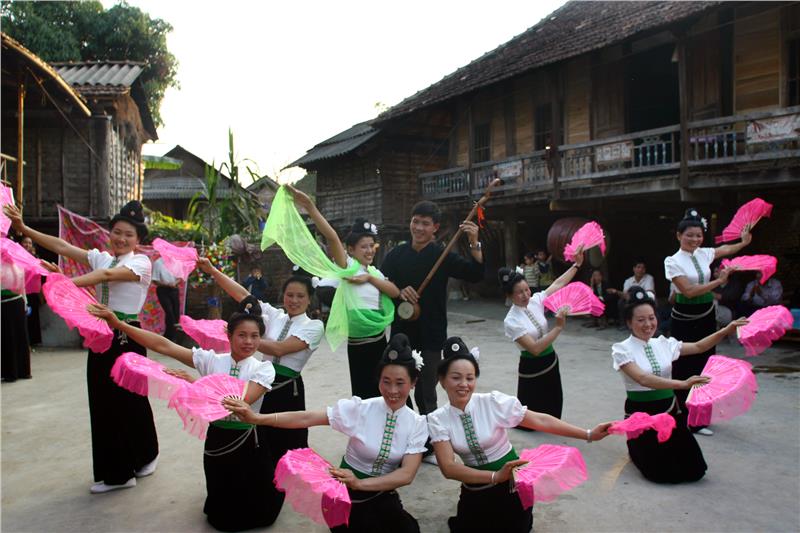
Currently, Dien Bien has 21 ethnic groups living together (Thai, Mong, Kinh, Dao, Kho Mu, Ha Nhi, La Hu, Giay, Lao, Phu La, Cong, Si La, Khang, Lo Lo, Hoa, Lu, Tay, Nung, Muong, Xinh Mun and Mang). Among them, Thai ethnic people cover the majority of population in Dien Bien with 40, 43%. The percentage of remaining ethnic groups is relatively Mong people (30.86%), Kinh ethnic group (19.11%) and other ethnic groups (11.6%).
Dien Bien province has 1 city, 1 town and 8 districts. Dien Bien Phu city has 7 wards and 2 communes. Muong Lay town (former Lai Chau town) has 2 wards and 1 commune. 8 districts of Dien Bien include Dien Bien, Dien Bien Dong, Muong Ang, Muong Cha, Muong Nhe, Tua Chua, Tuan Giao, and Nam Po. Dien Bien has 130 communal administrative units including 9 wards, 5 towns and 116 communes.
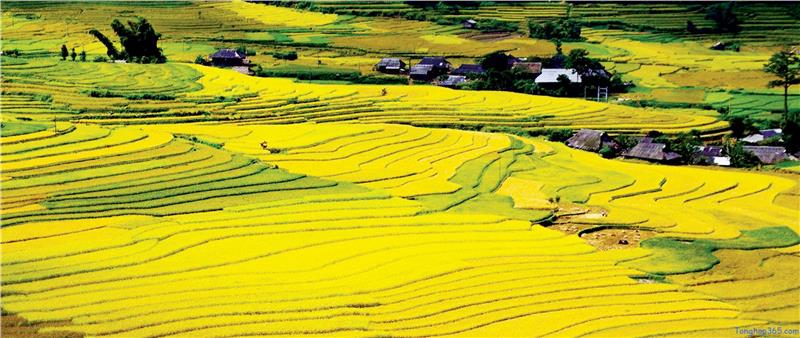
Besides the advantage of tourism, unused land of Dien Bien province is high (55%). This is the key to development of agriculture and forestry, especially short-term industrial crops and animal husbandry. Muong Thanh rice field is guided into the center of high-quality rice production of the Northwest. Many areas like Muong Nhe, Si Pa Thin and Dien Bien are capable to raise cattle. As the only province bordering with Laos and China, Dien Bien has an important position in the international trade. The province has many border gates as Tay Trang, Huoi Puoc (Laos), and A Pa Chai - Long Phu (China). Vietnamese and Lao Governments upgraded Tay Trang border gate into an international border gate associated with the economic zone in border gate. This is a great opportunity for Dien Bien to develop into the main transit route through Asia in the north, connecting Northwest Vietnam with North Laos, Southwest China and Northeast Myanmar. Son La hydropower plant and project of expanding three national highways passing through the province create more favorable conditions for the economic development.
In 2014, Dien Bien economy achieved comprehensive results on the fields. The gross regional domestic product (at constant price 2010) was estimated at 7590.8 billion dong, up 9.08% compared to 2013. The economic structure continues to shift towards the positive direction. Agriculture, forestry and fishery accounted for 24.11%, decreasing 1.46%, construction - industry accounted for 30.92%, an increase of 1.38%, service accounted for 44.97%, up 0.09% compared to 2013. Per capita income (at current price) was estimated at 20.75 million dong/ person/ year, an increase of 12.65% over 2013.
Industrial production has positive changes compared with 2013. The value of industrial production (constant price 2010) reached 2036.3 billion dong, achieving 85.99% of the plan, increasing 9.85% compared to 2013. Total retail sales of goods and service was estimated at 6888 billion dong, up 20.75% compared to 2013 and 2.81% of the plan. The average consumer price index (CPI) in 2014 reached 5.32% compared December 2013.
Import activity in the province has maintained and grown. Import turnover reached 23.2 million USD, up 24.46% over 2013. The number of tourists to Dien Bien in 2014 increased sharply, especially before May 7th. Revenue from tourism was estimated at 540 billion dong, up 24.5%.
In 2014, the province maintains regular employment to 293,290 workers, creates new jobs for 8,500 employees, reaching 100% of the plan, up 0.3% compared to the same period. Implementing new recruit training for 7,875 employees, reaching 98.43% of the plan, up 0.76% over the same period last year, including vocational training for 6050 rural labors, reaching 95.27 % of the plan (down 4.27% over the same period last year). Continue to direct the agencies and departments to promote implementation of programs and projects on poverty reduction; focus on implementing policies to support production, job creation, vocational training, labor exports in five poor districts and 2 districts of Tuan Giao and Muong Cha. Implement effectively National Health Target Program, activities in disease prevention in humans, and improve quality health care at the medical facilities. Education and training continues to consolidate and develop the staff of teachers, education managers, develop a network of schools, student size and improve the quality of education.
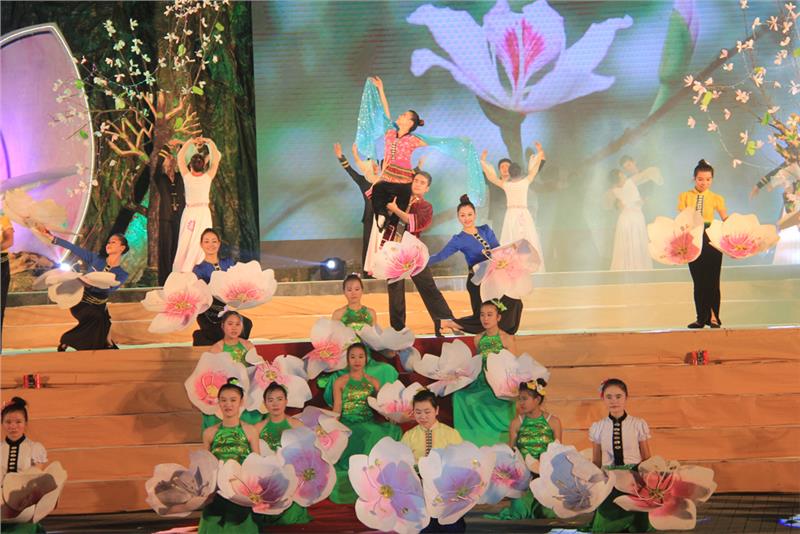
Dien Bien is the home to 21 ethnic groups. Each group with its own features in language, customs and habits, culture has created the colorful painting for Dien Bien culture. Working life has formed one of the unique traditional cultures of ethnic communities here. It is dances as xoe, lam vong, then singing, and so on. Spread Thai dance - cultural characteristics of ethnic groups in Dien Bien.Xoe dance is a characteristic culture of Thai ethnic people in Dien Bien. Xoe is the chance for people to relax exchange and share their emotion. In addition to traditional dances and songs, tourists can admire the costumes decorated meticulous and colorful patterns. In particularly, in spring festivals, the images of H’mong men dancing and playing khen to invite the beautiful girls in colorful costumes have left unforgettable impression on tourists. Besides Thai ethnic people and Mong ethnic people, there are other ethnic groups who only live in Dien Bien, that is Cong ethnic people, La Hu ethnic people, Si La ethnic people, Mang ethnic people, so on. Each ethnic group has its own cultural identity contributing to the diversity of Dien Bien culture.
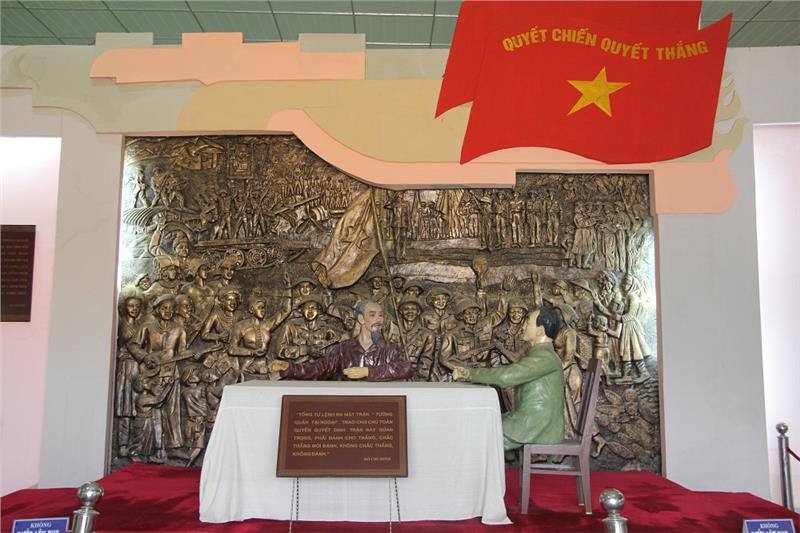
Dien Bien is a province rich in tourism potential, especially historical cultural aspect. The most highlight is the historical relics in the battle of Dien Bien Phu. Historical relics of Dien Bien Phu victory is the invaluable tourism resource, the gold mine of Dien Bien tourism. Historical sites of Dien Bien Phu consist of headquarters of Dien Bien Phu - Muong Phang, Him Lam hill, Ban Keo hill, Doc Lap hill and hills of A1, C1, D1, E1 and command bunker of General De Castries. All are gathered into a continuous relic cluster evoking a vivid picture of the glorious historical campaign of the nation.
Today, when mentioning to Dien Bien Phu Victory, many domestic and foreign tourists admire and desire at least once to visit this place. Historical monuments of Dien Bien Phu victory have important value for the tourism development of Dien Bien. In addition, there are many other relics imbued with glorious historical stamp in the past and beautiful scenic spots that can satisfy the most discerning tourists. Ban Phu citadel, Uva hot mineral spring, Pe Luong, Sang village, Pa Thom cave, Pa Khoang lake, Muong Luan tower, Chieng So, Huoi Pha, Hong Khenh or primitive forest in Muong Nhe are indispensable attractions in Dien Bien. Visiting Dien Bien Phu, tourists should not miss to visit mountainous markets bearing the identity of mountainous region. Tua Chua has 3 major fair including Muong Bang, Xa Nhe and Ta Sin Thang. At the fairs in Tua Chua district, tourists will not be invited with the insistence, but only see the ingenuous faces of ethnic people in colorful clothing. They go to the market for purposes of not only buying and selling but also pleasing with the market, with customers.
Festival

With typical festivals as Thanh Ban Phu annually held in the 24th and 25th of the 2rd lunar month to commemorate the national hero Hoang Cong Chat, General Ngai and General Khanh who led the people to expel the invader. This is a very unique festival expressing solidarity between people in the lowland and mountainous region, to protect the northwest frontier of the country. It has become cultural and spiritual attraction of tourists.
Additionally, there are many unique festivals of ethnic communities as agricultural rituals of Thai ethnic people as welcome the first thundering, le com moi, le cung ruong, pray for rain... Among them, the most outstanding festival is Xen festival praying for good weather, good crops, prosperity and happiness. Thai ethnic people have also other typical festivals as Xen phan be (beheading goat's head), Kin Pang Then (worshiping heaven), Kin khui (relieve somebody of his run of bad luck).
Besides, Mong ethnic people in Dien Bien have unique traditional festivals. Du Su is an annual festival held in July 27th. Du Su festival is held to relieve bad luck for family and pray for luck. The organization of the festivals to pray for peace, crops, lucky and happiness, they are also the chances for the previous generation to advise their descendants in working and learning. In addition, Mong ethnic people have a number of distinguished festivals like Khlang Khua (Thanksgiving parents), Khe pe chau, nau pe chau (held in spring).
